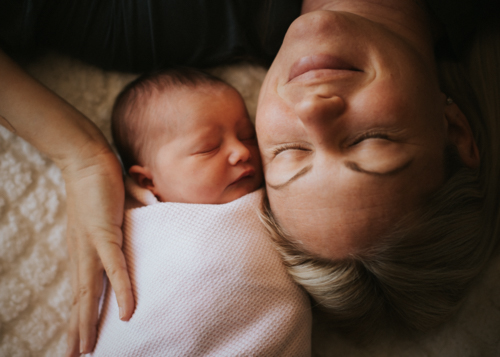Watch a calm, behind the scenes short trailer of the experience of having Paulina Splechta, professional birth photographer and film maker attend your birth
The most commonly asked question by families who are expecting a new baby and considering hiring a Birth Photographer is..
"So... how does it work?"
I love to answer this question, and its an excellent one. The way birth photography sessions work is unlike any other type of photography you've ever done before. It is similar to a wedding in that it is one of the greatest milestones in your life that happens quickly, and only once, and can never be simulated or repeated exactly the way it happened.
But unlike all portraiture photography (such as newborn and family photography) and unlike wedding photography, birth photography brings with it the element of unpredictability.
Boca Midwifery Nurse Certified Midwives Courtney McMillian and Polina Goldenberg patiently waiting on a mom in labor
One of my favorite practices to work with in Boca Raton, Boca Midwifery, recently posted the perfect example of how unpredictable birth is with the following quote...
“She chose a midwife. She hired a doula. She stayed at home for hours in early labor. She was active, rocking and swaying to get her baby to come down. She walked the halls, she used the shower. She endured 18 hours of natural labor beautifully. Sometimes you do everything right and birth still doesn’t go as planned. So this baby was born by cesarean. Not at all how this mom had planned to bring her baby in to the world, but she was okay. Why? Because she was still respected. She was educated and part of the decision. Her mom and husband were by her side as she greeted her new baby boy. She saw him emerge from the womb, and stared at his sweet little face as he took his first breaths, while we allowed the cord to pulse. Routine procedures were delayed and he was in his mother’s arms just minutes after being born. He was latched on to the breast as soon as she was back in her room. Not ideal, but ok. In the end, she has no regrets. She was well-prepared for her ideal birth but also realistic about her priorities. She trusted her birth team and is so, so happy with the outcome overall. And she is so proud of herself. THIS is what informed birth is about. THIS is why she won’t be in another doctor’s office, years down the road, still crying about her birth. Unfortunately we hear horrific stories of birth trauma every week in our office. It doesn’t have to be that way. Choose your birth team wisely.”
Boca Midwifery patient with her newborn baby boy, older daughter and husband the day after her cesarean birth.
So the next question is...
"if birth is so unpredictable, how do you make it in time to document the birth story?"
When I start working with my birth clients, we start preparing for their birth story from the very first day they contact me.
I take limited birth clients each month to ensure there is no overlap, although it is estimated that "only 5% of women go into labor on their due date (In other words, it is wrong for 95%!). [source]"
Once an expecting mother becomes my birth client, I am available to her via text, phone call, and email through her entire pregnancy. And for a healthy pregnancy without any risks or complications, I go on-call for birth clients at 38 weeks gestation.
Boca Midwifery patient with her newborn baby girl the day after giving birth at Boca Raton Regional Hospital
"So what does being on-call mean?"
Addressing this question requires a multi-faceted answer.
Because working as a 12-month-per-year on-call photographer involves the client, the medical provider, the birthing facility, the photographer, and the photographer's personal life (family/children).
Certified Nurse Midwife Courtney McMillian of Boca Midwifery with her patient and newborn baby girl.
COMMUNICATION
Me being on-call for a client means that I have my cell phone with the volume always on, even during the night. During the day, my cell phone is never in my purse or in another room, it is with me, in my hand, 24 hours of every day, 7 days of every week from the time my client is 38 weeks pregnant until her baby is born. Furthermore, I instruct birth clients to only call, and never to leave a voicemail after 9pm and before 9am, so that I don't miss a text during the night if they are updating me on early labor progress.
Being on-call means anywhere from as little as 5 to as many as 200 text messages can be exchanged during day time, as well as multiple phone calls during the day and night updating me with early labor progress, the birth client or her partner or spouse giving me updates from their doula or nurse on labor progress, and sometimes, to tell me there has been a change made by their OBGYN or Midwife to their previous birth plan.
Being on-call also means that I do not travel outside a specific distance from my birth client's birthing location in any direction so that I can attend her birth as soon as she is in active labor and ready for me to arrive and begin documenting her journey.
PRIVACY
Unlike other fields of the birth world such as obstetrics / midwifery where a birthing woman may occasionally have a different practitioner from the practice who she's met during her prenatal visits deliver her baby if her chosen provider is unexpectedly unavailable, hiring a birth photographer can sometimes be a leap of faith for first time and even second time parents.
Some of my birth clients understandably need extra privacy and confidentiality, and my goal is to work as closely to my birth clients as possible without a need for hiring a backup photographer to replace me during births. Although it is important for me to work with highly professional and skilled women (who are also mothers) who are put to the strictest standards of high quality birth artwork in the event I have an imminent emergency during a client's labor, my goal is to always be dependable and attend every one of my birth client's births myself, and I am glad to say in four years of birth photography (out of my ten years of working as a photographer), I have attended each of my client's births myself.
Because of this, I refrain from going to locations where I know I won't have cell phone signal when I am on-call for my clients, such as certain grocery stores, movie theaters, malls, etc. Or if I am on-call for a client and need to briefly go somewhere there is no cell phone signal where they would temporarily for 1-2 hours not have access to me, I am sure to check in with my birth clients prior to ensure there have been no early signs of labor and inform them when I will be reachable again.
Certified Nurse Midwife Courtney McMillian of Boca Midwifery steadily waiting on her patient without rushing
Being on-call means I also have a back up contact number, and although this has never happened, if my birth client calls me multiple times and cell towers are being funky, they have a back up number to call me on where they can reach me immediately.
And lastly, being on-call means I have to have my personal life in check. I am fortunate to have a supportive and active spouse, grandparents down the street, full time childcare and meal planning ready to ensure my personal life continues to move smoothly with my absence in mind.
To paraphrase from the awesome post done by Boca Midwifery and changing it a bit to apply it to the artwork I create for my families...
THIS is why my clients won't hire an photographer without years of birth artwork experience, years down the road with subsequent births. Unfortunately I hear sad stories of family portraiture photographers, siblings, husbands, grandparents missing the shot, pictures being blown out (too bright) because they didn't know how to deal with the last minute and unexpected changes in light, blurry pictures, or pictures not being special enough because they were too anatomy-textbook-like.
It doesn't have to be that way. Choose your birth team wisely, including your professional birth photographer who will quietly work around you so as not to disturb the birth process or the birth professionals caring for you. Someone who has formed great relationships with midwives and obstetricians who welcome your birth photographer to document their patient's stories.
















